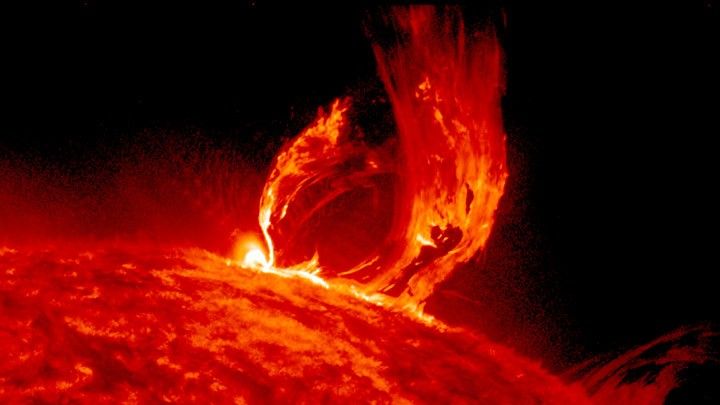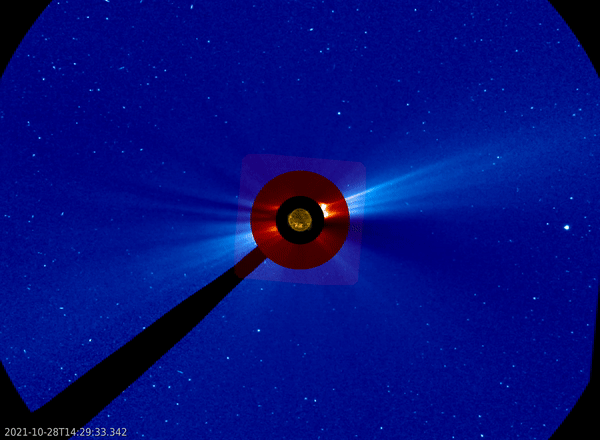Science
Related: About this forumMassive solar explosion felt on Earth, the moon and Mars simultaneously for the 1st time ever
By Joanna Thompson published about 7 hours ago
Instruments in different parts of the solar system all captured radiation from the same coronal mass ejection for the first time ever.

An enormous solar outburst called a coronal mass ejection (CME) erupts from the sun in this Solar Dynamics Observatory image (Image credit: NASA/ Goddard/ SDO)
On Oct. 28, 2021, a huge burst of plasma and magnetized particles erupted from the sun. The massive solar outburst washed over Earth, the moon and Mars, bathing them in radiation. And, for the first time, instruments on all three bodies measured the same event almost simultaneously.
On Mars, the European Space Agency’s ExoMars Trace Gas Orbiter (TGO) and NASA's Curiosity rover registered the influx of energized particles. On the moon, these particles were picked up by the Chinese National Space Administration's Chang'e-4 and NASA's Lunar Reconnaissance Orbiter (LRO). And closer to home, the German Aerospace Center's Eu:CROPIS satellite detected the radiation from low Earth orbit. The effects of this solar hat trick were reported Aug. 8 in the journal Geophysical Research Letters.
Understanding such events, known as coronal mass ejections (CMEs), is crucial for future space exploration, including planned missions to send astronauts to Mars and to establish a scientific outpost on the moon. On Earth, our magnetic field acts as a shield against most dangerous solar outbursts. But the moon and Mars lack this protective magnetosphere, which means that a lot more radiation makes it to their surfaces.

The coronal mass ejection (CME) on October 28, 2021, as seen by ESA's SOHO satellite. (Image credit: ESA)
All that radiation can have a negative impact on astronauts. Exposure to high doses of radiation can lead to skin irritation, nausea, blood disorders, weakened immunity and even cancer, according to a 2014 study published in the journal Life. In acute cases, it can cause burns and neurologic degeneration. A dangerous dose is considered to be around 700 milligray (1 gray being one unit of radiation). Fortunately, the Oct. 28 CME was much weaker than that, only clocking in at around 31 milligray — but CMEs become both more frequent and more intense as the sun approaches the peak of its 11-year solar activity cycle, which could begin as soon as the end of 2023.
More:
https://www.livescience.com/space/the-sun/massive-solar-explosion-felt-on-earth-the-moon-and-mars-simultaneously-for-the-1st-time-ever
GreenWave
(12,121 posts)Forgive us for we know not what we do. ![]()
WheelWalker
(9,374 posts)sage